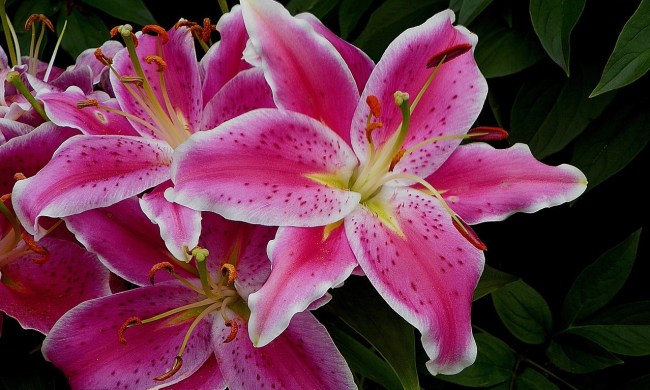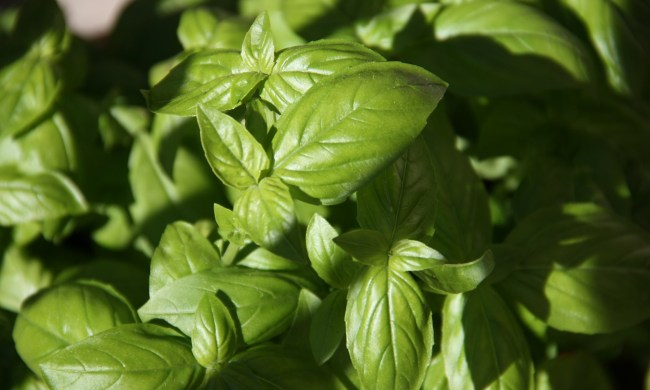After the colors of fall have faded, the outdoors can look a bit bleak. Without flowers or foliage, what is there to provide your yard or garden with some life? Evergreen trees and shrubs are an excellent way to add color and vitality back into a dreary winter landscape. Adding one to your yard can revitalize your winter space. Not sure which evergreen tree to choose? Here are our six favorite types of evergreen trees you should consider adding to your yard.
White fir

White firs are beautiful native pine trees with a silver-blue color. They grow slowly, but are quite hardy. White fir trees can grow in most soil types, from highly acidic loam to sandy soils, although they do have more difficulty in clay-heavy soils. They grow best in full sun but can tolerate partial shade. For the first few months after planting, you should water your white fir tree regularly to encourage it to grow strong roots. After this, you can reduce watering significantly. White fir trees are drought tolerant. but once established, they only need water during hot, dry weather. Pruning isn’t typically necessary for white fir trees unless they have damaged or diseased branches.
Arbor vitae

Arbor vitae is a popular, fast-growing evergreen tree that is often planted as a privacy hedge. They can grow up to 3 feet per year and have a lovely cone shape, making them easy to grow in rows. Arbor vitae does best when planted in full sun and well-draining soil. These trees need fairly regular watering. Installing a drip irrigation system or other type of automatic watering system can be helpful. They need to be watered a few times a week for the first year or two and once a week after that. Arbor vitae will also benefit from pruning, particularly along the bottom branches, where a lack of light and air circulation can cause damage.
Boxwood

Boxwoods are great evergreen shrubs, perfect for small spaces, walkway borders, or low hedges. They stay fairly small and their dense growth makes them easy to trim into shapes. Rounded and squared are the most common shapes people trim boxwoods into, but they’re also an excellent choice if you want to try your hand at creating a topiary. Plant your boxwood in full sun to partial shade and well-draining, slightly alkaline soil. Water your boxwoods regularly for the first year or two after planting. Afterward, boxwoods are drought tolerant and only need to be watered when the weather is hot and dry. If you want to shape your boxwood, trim it in spring or winter.
Japanese holly

Japanese holly shrubs resemble boxwoods, but they tend to be lighter green, not quite as dense, and they have cup-shaped flowers. They prefer full sun but can tolerate some shade, and they will adapt to most soil types. Once they’re planted and established, Japanese holly shrubs need little care. Trim them in spring or winter to keep the shape neat and even, and water them when the weather is particularly hot and dry. Otherwise, you can mostly leave this cute shrub to its own devices and simply enjoy it! Japanese holly shrubs are perfect for walkway borders, fence lines, and front lawns.
Blue spruce

Blue spruces are one of the more popular types of evergreen trees because of their beautiful color and easy-care requirements. Similarly to the white fir, blue spruces have a silver-blue color, typically leaning more toward blue. They have a classic cone shape, similar to a standard Christmas tree. Blue spruces are slow-growing trees but can grow incredibly tall if given enough space and time. Blue spruce trees prefer full sun and rich, well-draining soil, but they are also fairly adaptable. While blue spruces appreciate regular watering, blue spruce trees are more drought tolerant than most of their close relatives.
White pine

If you want an evergreen tree with the classic pine look, white pines are the way to go. They are hardy and adaptable, too, making them easy to grow. White pines enjoy acidic soil, and luckily, pine needles help make the soil more acidic. Spread some pine needle mulch around your tree for the first few years until your pine tree has dropped enough needles to make its own mulch. White pines can grow in the sun or the shade, and planting them in a mix of sun and shade is a good idea. Water your white pine regularly after planting, but once the plant has matured some, you can reduce that.
These six types of evergreen trees are a great place to start. Whether you’re an expert or a beginner, these trees are beautiful and easy to grow. Your local wildlife will enjoy having the extra shelter and food provided by these evergreens, and you’ll get to enjoy a bit of color during winter. It’s a win-win!




